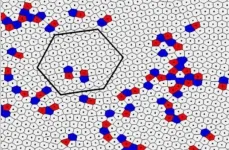INFORMATION:
The research was funded by the National Institute of Mental Health.
Youths with mood disorders who use marijuana at higher risk of death, self-harm
Not only might youth with mood disorders of greater severity be more inclined to use cannabis than less severely affected youth, but cannabis use can also worsen symptoms and interfere with successful mood disorder treatment
2021-01-19
(Press-News.org) Youths with mood disorders who use and abuse cannabis (marijuana) have a higher risk for self-harm, death by all causes and death by unintentional overdose and homicide, according to research led by The Ohio State University Wexner Medical Center and The Ohio State University College of Medicine.
Study findings are published in the JAMA Pediatrics.
"Marijuana use and addiction is common among youth and young adults with mood disorders, but the association of this behavior with self-harm, suicide and overall mortality risk is poorly understood in this already vulnerable population. These findings should be considered as states contemplate legalizing medical and recreational marijuana, both of which are associated with increased cannabis use disorder," said lead author Cynthia Fontanella, an associate professor in the department of psychiatry and behavioral health at Ohio State.
Fontanella collaborated with other researchers at the Ohio State Wexner Medical Center, Ohio State department of bioinformatics, Abigail Wexner Research Institute at Nationwide Children's Hospital and Rockefeller Neuroscience Institute at West Virginia University.
This study reviewed Ohio Medicaid claims data linked with death certificate data. The analysis included 204,780 youth (age 10 to 24 years) diagnosed with mood disorders between July 1, 2010 and December 31, 2017 and followed for up to one year from the initial claim until the end of enrollment, the self-harm event, or death.
Researchers looked for physician-diagnosed cannabis use disorder and measured non-fatal self-harm, all-cause mortality, deaths by suicide, unintentional overdose, motor vehicle crashes and homicide to examine the associations between cannabis use disorder and outcomes.
Cannabis use disorder was documented in more than 10% (21,040) of youths with mood disorders. It was significantly associated with older age, male sex, black race, bipolar or "other" mood disorders, prior history of self-harm and previous mental health service use, including psychiatric hospitalization and emergency department visits, Fontanella said.
"We also found that cannabis use disorder was significantly associated with self-harm, including death by unintentional overdose and homicide. Unfortunately, while this observational study calls attention to these associations, it is unable to contribute to our understanding of causality or mechanism," Fontanella said.
Not only might youth with mood disorders of greater severity be more inclined to use cannabis than less severely affected youth, but cannabis use can also worsen symptoms and interfere with successful mood disorder treatment.
"Decreasing the rates of cannabis use and cannabis use disorder might reduce risk. Individual and family-based therapy models, including cognitive behavioral therapy and motivational enhancement therapy have been shown to decrease cannabis use in youth," said senior author Mary Fristad, an emerita professor in Ohio State's department of psychiatry and behavioral health and director of academic affairs and research development at Nationwide Children's Hospital Big Lots Behavioral Health Services.
A national study examining the mortality risk for youth and young adults with comorbid mood disorders and cannabis use disorder could further inform policy and treatment trials, Fontanella said.
Fontanella and her colleagues are planning further exploration of the role of marijuana laws on youth mental health outcomes.
ELSE PRESS RELEASES FROM THIS DATE:
Appreciating a flower's texture, color, and shape leads to better drone landings
2021-01-19
If you ever saw a honeybee hopping elegantly from flower to flower or avoiding you as you passed by, you may have wondered how such a tiny insect has such perfect navigation skills. These flying insects' skills are partially explained by the concept of optical flow: they perceive the speed with which objects move through their field of view. Robotics researchers have tried to mimic these strategies on flying robots, but with limited success. A team of TU Delft and the Westphalian University of Applied Sciences researchers therefore present an optical flow-based learning process that allows robots to estimate distances through the visual appearance (shape, color, texture) of the objects ...
NAD+ can restore age-related muscle deterioration
2021-01-19
The older we grow, the weaker our muscles get, riddling old age with frailty and physical disability. But this doesn't only affect the individual, it also creates a significant burden on public healthcare. And yet, research efforts into the biological processes and biomarkers that define muscle aging have not yet defined the underlying causes.
Now, a team of scientists from lab of Johan Auwerx at EPFL's School of Life Sciences looked at the issue through a different angle: the similarities between muscle aging and degenerative muscle diseases. They have discovered protein aggregates that deposit in skeletal muscles during natural aging, and that blocking this can prevent the detrimental features of muscle ...
TGen-NAU study: COVID-19 virus triggers antibodies from previous coronavirus infections
2021-01-19
FLAGSTAFF, Ariz. -- Jan. 19, 2021 -- The results of a study led by Northern Arizona University and the Translational Genomics Research Institute (TGen), an affiliate of City of Hope, suggest the immune systems of people infected with COVID-19 may rely on antibodies created during infections from earlier coronaviruses to help fight the disease.
COVID-19 isn't humanity's first encounter with a coronavirus, so named because of the corona, or crown-like, protein spikes on their surface. Before SARS-CoV-2 -- the virus that causes COVID-19 -- humans have navigated at least 6 other types of coronaviruses.
The study sought to understand how coronaviruses (CoVs) ignite the human immune system and conduct a deeper dive on the inner workings of the antibody response. The ...
Different types of neurons interact to make reaching-and-grasping tasks possible
2021-01-19
Researchers looked at neurons within the basal ganglia, a part of the brain that, when damaged, can severely impact a person's motor ability, making seemingly simple reaching-and-grasping tasks near impossible
They focused on a large group of neurons, which has two distinct types - D1 direct striatal output neurons and D2 indirect output neurons
These neurons are implicated in the development of Parkinson's and Huntington's - neurodegenerative diseases that result in the progressive degeneration or death of nerve cells
In this research, mice were trained to reach for and grasp a chocolate pellet, and optical methods were used to either excite or inhibit their D1 or D2 neurons
The researchers ...
Story tips: Volcanic microbes, unbreakable bonds and flood mapping
2021-01-19
Biology - Volcanic microbes
Oak Ridge National Laboratory contributed to an international study that found almost 300 novel types of microbes living near a deep sea volcano. These microbes, which could be used in biotechnology, reveal new insights about their extreme underwater environment.
Two distinct communities of heat-loving and many acid-loving microbes live near Brother's Volcano, located about 200 miles northeast of New Zealand and 6,000 feet underwater. Known as extremophiles, these microbes thrive in water heated by magma and hydrothermal vents.
Though they live close to one another, the microbial communities reflect differences in water chemistry and temperature from geological ...
New study shows correlation between teen obesity and mental health issues
2021-01-19
Half of all young people treated for severe obesity have neuropsychiatric problems, according to a new study by researchers from Lund University and Gothenburg, Sweden, among others. Two thirds of the teens suffered from some type of mental health problem, as reported by themselves or their parents.
Both obesity and mental illness have increased among young people during the 2000s. Researchers have long observed a connection between obesity and ADHD/depression/eating disorders, but it has seldom been studied.
The present study involved 48 teenagers (73% girls), ...
NIH study compares low-fat, plant-based diet to low-carb, animal-based diet
2021-01-19
People on a low-fat, plant-based diet ate fewer daily calories but had higher insulin and blood glucose levels, compared to when they ate a low-carbohydrate, animal-based diet, according to a small but highly controlled study at the National Institutes of Health. Led by researchers at the National Institute of Diabetes and Digestive and Kidney Diseases (NIDDK), the study compared the effects of the two diets on calorie intake, hormone levels, body weight, and more. The findings, published in Nature Medicine, broaden understanding of how restricting dietary carbohydrates or fats may impact health.
"High-fat foods have been thought to result in excess calorie intake because they have many calories per bite. Alternatively, high-carb ...
Experimental evidence of an intermediate state of matter between a crystal and a liquid
2021-01-19
Scientists from the Joint Institute for High Temperatures Russian Academy of Sciences (JIHT RAS) and Moscow Institute of Physics and Technology (MIPT) have experimentally confirmed the presence of an intermediate phase between the crystalline and liquid states in a monolayer dusty plasma system. The theoretical prediction of the intermediate - hexatic - phase was honoured with the Nobel Prize in Physics in 2016: the prize was awarded to Michael Kosterlitz, David Thouless and Duncan Haldane with the formulation "for theoretical discoveries of topological phase transitions and topological phases of matter."
In a scientific article in the journal Scientific Reports, the JIHT RAS scientists published their observations ...
Blockchain technology to optimize P2P energy trading
2021-01-19
A Tokyo Tech research team led by Specially Appointed Professor Takuya Oda of the Institute of Innovative Research and Professor Keisuke Tanaka of the School of Computing, in collaboration with Mitsubishi Electric Corporation, has developed a new technology an original blockchain[1] technology that can optimize peer-to-peer (P2P) energy trading[2]. The technology is expected to contribute to more effective use of surplus electricity from renewable energy by creating trading environments that flexibly respond to shared trading needs, particularly to ...
Geisinger researchers find sex is not an independent risk factor for stroke mortality
2021-01-19
DANVILLE, Pa. - An analysis of data collected from patients treated for ischemic stroke at Geisinger shows no disparity in outcomes based solely on sex.
Various studies have suggested that women are disproportionately affected by stroke and may have poorer stroke outcomes. Women have a longer life expectancy than men and, therefore, likely have an increased lifetime risk of stroke. Women tend to be older than men at the time of stroke and have a higher pre-stroke degree of disability or dependence in their daily activities, which may contribute to worse outcomes. Rural populations may also have a higher risk of stroke based on a greater incidence of conditions ...
LAST 30 PRESS RELEASES:
New expert guidance urges caution before surgery for patients with treatment-resistant constipation
Solar hydrogen can now be produced efficiently without the scarce metal platinum
Sleeping in on weekends may help boost teens’ mental health
Study: Teens use cellphones for an hour a day at school
After more than two years of war, Palestinian children are hungry, denied education and “like the living dead”
The untold story of life with Prader-Willi syndrome - according to the siblings who live it
How the parasite that ‘gave up sex’ found more hosts – and why its victory won’t last
When is it time to jump? The boiling frog problem of AI use in physics education
Twitter data reveals partisan divide in understanding why pollen season's getting worse
AI is quick but risky for updating old software
Revolutionizing biosecurity: new multi-omics framework to transform invasive species management
From ancient herb to modern medicine: new review unveils the multi-targeted healing potential of Borago officinalis
Building a global scientific community: Biological Diversity Journal announces dual recruitment of Editorial Board and Youth Editorial Board members
Microbes that break down antibiotics help protect ecosystems under drug pollution
Smart biochar that remembers pollutants offers a new way to clean water and recycle biomass
Rice genes matter more than domestication in shaping plant microbiomes
Ticking time bomb: Some farmers report as many as 70 tick encounters over a 6-month period
Turning garden and crop waste into plastics
Scientists discover ‘platypus galaxies’ in the early universe
Seeing thyroid cancer in a new light: when AI meets label-free imaging in the operating room
Neutrophil-to-lymphocyte ratio may aid risk stratification in depressive disorder
2026 Seismological Society of America Annual Meeting
AI-powered ECG analysis offers promising path for early detection of chronic obstructive pulmonary disease, says Mount Sinai researchers
GIMM uncovers flaws in lab-grown heart cells and paves the way for improved treatments
Cracking the evolutionary code of sleep
Medications could help the aging brain cope with surgery, memory impairment
Back pain linked to worse sleep years later in men over 65, according to study
CDC urges ‘shared decision-making’ on some childhood vaccines; many unclear about what that means
New research finds that an ‘equal treatment’ approach to economic opportunity advertising can backfire
Researchers create shape-shifting, self-navigating microparticles
[Press-News.org] Youths with mood disorders who use marijuana at higher risk of death, self-harmNot only might youth with mood disorders of greater severity be more inclined to use cannabis than less severely affected youth, but cannabis use can also worsen symptoms and interfere with successful mood disorder treatment




